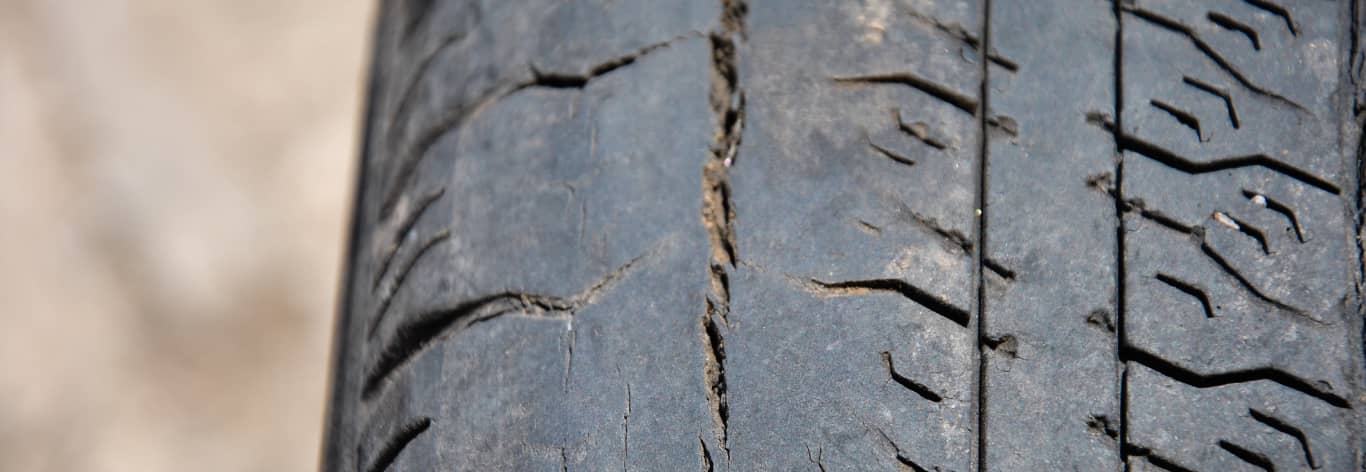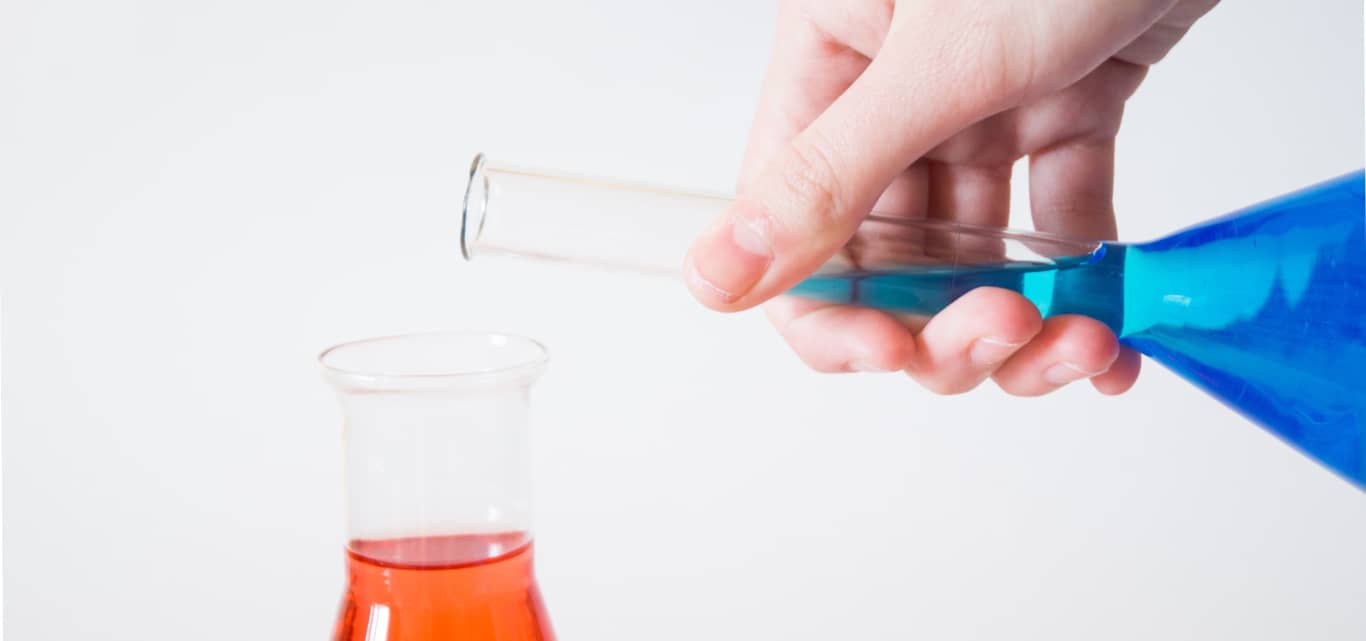The Ageing of Rubber
Ageing of rubber materials

Elastomers are susceptible to ageing and as rubber ages, its material properties deteriorate. This happens as the rubber polymer reacts with the environment around it, causing chemical changes in the material. These changes can occur due to new crosslinks being formed or main chain and crosslink scission which can lead to the degradation of the material. Ageing of a rubber material is an irreversible process, the rate of deterioration depends on a number of factors, including:
- Temperature
- Exposure to light
- Humidity
- Ozone over-exposure
- Chemical contact
- Deformation
What is the shelf life for rubber?
The shelf life of a material is the recommended amount of time that a rubber material can be kept in storage. The recommended shelf life varies between different rubber materials. Silicone tends to last much longer than other rubber materials and can be stored for up to 20 years. The standard shelf life of rubber materials is shown in the table below. This table is based on information found in MIL-HDBK-695D Military Standardization Handbook for Rubber Products: Recommended Shelf Life.
| Rubber Material | Recommended Shelf Life |
|---|---|
| Natural Rubber | 3-5 years |
| Isoprene | 3-5 years |
| SBR | 3-5 years |
| Neoprene | 5-10 years |
| EPDM | 5-10 years |
| Butyl | 5-10 years |
| Nitrile | 5-10 years |
| Viton | 20 years |
| Silicone | 20 years |
How do you store rubber?
The shelf life of material will be affected by the storage condition. Bad or unsuitable storage conditions can shorten the expected shelf life of the material. It is recommended to store rubber at temperatures below 38°C and away from direct sunlight, UV rays or intense artificial light. Ideally, the rubber should be stored at humidity levels of less than 75% or kept in sealed moisture-proof bags. The rubber should not be placed near electrical motors or high voltage equipment and exposure to any liquids or vapours should be avoided. To stop the material from deteriorating, the rubber product should not be hung, folded, or rolled in storage as this can lead to tension and bending. Ideally, rubber materials should be kept in storage for as short a time as possible.
How do you prolong the life of rubber?
Many rubbers contain double bonds in their polymer chains which allows them to be easily vulcanised with sulphur. However, these double bonds present could react with the oxygen or ozone in the air. This can cause the rubber to perish over time. To prevent this phenomenon, “antioxidants” and “antiozonants” can be added to the rubber compounds. These chemicals help to improve the service life of the compound.
How does temperature affect rubber?
When choosing a material, it is important to consider the temperature range in which it will be operating. Rubbers can be very sensitive to extreme temperatures. Some rubber compounds have more resistance to temperature than others. Each compound must be tested to determine the specific operating temperature of the material. At very low temperatures, rubbers can become stiff. This loss of flexibility can cause cracking in the rubber which will remain in the material forever, even after it has been reheated.

How is rubber affected by high temperatures
High temperatures can cause ageing and deterioration of the rubber. Initial exposure to high temperatures can cause the material to soften. This softening can be reversed once the temperature drops again. However, if the rubber is held at a high temperature for a long period of time, chemical changes begin to occur within the rubber polymer. These changes can lead to an increase in material hardness as well as changes in the tensile strength and the elongation of the material. These chemical changes are irreversible.
Rubber characteristics in harsh conditions
The maximum operating temperature of a rubber compound is based on the long-term function service of the material. The material should be able to perform reliably even after being held at this temperature constantly for thousands of hours.
Material selection is extremely important when choosing rubber for a high-temperature application. For example, rubbers used in a steam or gas turbine may be exposed to high temperatures. Rubber compounds such as silicone or fluorocarbon are good choices in these cases as they offer excellent heat resistance.
Unlike other materials, rubber contracts in heat and expands in cold temperatures. This is because when the long molecular chains get hotter and vibrate, they shorten, causing the material to contract. When the chains cool down, they relax and stretch out and cause the material to expand.
Chemical reactions with rubber
Exposure to chemicals can cause material ageing and can cause the material properties of rubber to deteriorate. When selecting a material, it is very important to consider the chemicals which will be in contact with the rubber. Depending on the chemical structure of the rubber polymer, the rubber will react differently to various substances.
For example, in outdoor water-based environments, EPDM is the go-to choice of material as it has excellent UV resistance as well as dealing out good resistance to nitrogen, potassium and sodium.

Rubber oil resistance
Contact with oil can cause the rubber to swell. This happens as the hydrocarbons from the oil are absorbed into the hydrocarbon polymer network.
The following rubbers offer some degree of oil resistance:
- CR - Polychloroprene
- NBR - Nitrile
- PU - Polyurethane
- FKM - Fluorocarbon
- Q - Silicone
Nitrile (NBR) is the standard rubber used in applications which require oil resistance such as automotive and machine environments. High grades of Nitrile can be fully submerged in oil.
Oxidation and ozone attack on rubber
Exposure to oxygen can often cause the rubber to harden, reducing its flexibility and causing cracking. Oxidation and ozone attack occur when oxygen atoms react with the polymer chains within a rubber. Rubbers with double bonds in the polymer chain are particularly susceptible to degradation by oxygen. Additives can be added to the formulation of the compound to increase the material resistance to these effects. Neoprene, Butyl and Viton will seal against oxygen.
Chemical attack on rubber
Contact with chemicals can lead to the rapid degradation of rubbers. It is important to ensure that rubber is compatible with all chemicals in its intended environment. A list of common chemicals and appropriate material choices for applications in these environments are shown below. Here is a comprehensive rubber chemical resistance chart.
- Ammonia - EPDM, Neoprene.
- Anti-freeze - Glycol based Nitrile, EPDM, Neoprene.
- Chlorine - Viton® with PTFE envelope.
- Ethanol - EPDM, Neoprene, Butyl.
- Helium - All polymers will seal against helium.
- Hydrogen Gas - Nitrile, EPDM, Neoprene.
- Methanol - Viton®, Nitrile (grade A), Silicone rubber and Fluor silicone.
- Nitrogen Gas - Most rubbers will seal against nitrogen gas (Nitrile, Natural rubber or EPDM are normally used).
- Sulphuric Acid above 96% - PTFE and expanded PTFE, Viton FKM, AFLAS, and EPDM with a PTFE envelope.
| Nitrile (NBR) | Ethylene Propylene Diene Methylene (EPDM) | Neoprene (CR) | Styrene Butadiene Rubber (SBR) | Silicone (VMQ) | Butyl (IIR) | Viton (FKM) | Polyurethane (AU, EU) | |
|---|---|---|---|---|---|---|---|---|
| Ammonia | Fair | Satisfactory | Satisfactory | Unsatisfactory | Fair | Satisfactory | Unsatisfactory | Unsatisfactory |
| Anit-freeze | Doubtful | Satisfactory | Satisfactory | Satisfactory | Fair | Satisfactory | Doubtful | Unsatisfactory |
| Chlorine | Fair | Unsatisfactory | Unsatisfactory | Unsatisfactory | Insufficient Data | Unsatisfactory | Satisfactory | Doubtful |
| Ethanol | Doubtful | Satisfactory | Satisfactory | Satisfactory | Fair | Satisfactory | Doubtful | Unsatisfactory |
| Helium | Satisfactory | Satisfactory | Satisfactory | Satisfactory | Satisfactory | Satisfactory | Satisfactory | Doubtful |
| Hydrogen Gas | Satisfactory | Satisfactory | Satisfactory | Fair | Doubtful | Satisfactory | Satisfactory | Satisfactory |
| Methanol | Unsatisfactory | Satisfactory | Satisfactory | Satisfactory | Satisfactory | Satisfactory | Unsatisfactory | Unsatisfactory |
| Oxygen Resistance | Fair | Satisfactory | Satisfactory | Fair | Satisfactory | Satisfactory | Satisfactory | Satisfactory |
| Ozone Resistance | Unsatisfactory | Satisfactory | Fair | Unsatisfactory | Satisfactory | Fair | Satisfactory | Satisfactory |
| Nitrogen Gas | Satisfactory | Satisfactory | Satisfactory | Satisfactory | Satisfactory | Satisfactory | Satisfactory | Satisfactory |
| Sulphuric Acid | Insufficient Data | Doubtful | Insufficient Data | Insufficient Data | Insufficient Data | Insufficient Data | Satisfactory | Doubtful |
| Water Resistance | Fair | Satisfactory | Doubtful | Doubtful | Fair | Doubtful | Satisfactory | Doubtful |